Pack Up and Go
With the car packed, my girlfriend Justine in the passenger seat and our dog Sweet Dee in her throne of a bed on the back seat, we head off on the C26 towards the Gamsberg. Destination: unknown.
We had set about preparing for our little trip by not doing anything at all in terms of preparations. It’s not that we didn’t want to, but just that we were either too busy or too tired to quickly have a small planning session. The only planning we did make was to not make any plans and wing it. Knowing that January is a slow month for tourism we were not too bothered about finding a place that would have a campsite available, but more whether they would allow our proper SPCA cur. An extra challenge of sorts.
In the mood for at least a scenic drive, we headed west on the C26 through the breathtaking landscape of the Khomas Hochland’s rolling hills. Making the cruise even better is the cloud cover protecting us from the recent sun-beating heat that we have become accustomed to.
Some obligatory photos are taken of the sweeping bends of the Gamsberg pass, and we make our way down the road as it gradually snakes its way down into the valley below.
Having only been able to get out of Windhoek quite late and the clock striking five, we start looking out for a campsite. Apart from not having a clue where we are going to sleep, we gave ourselves the extra challenge of having our SPCA street special with us. We would always make sure campsites are dog friendly when planning camp missions, but this time it will be a roll of the dice.
About 180km from Windhoek we look to the left of the road see a sign for Rooiklip Guest Farm (the sign itself panted on a flat klip or stone) which has camping facilities. Being 18km from the road we phone to find out if they have a campsite available rather than risk driving all the way there only to be disappointed. The phone rings and a gruff man’s voice answers. Asking if they have anything available he answers in the affirmative after consulting with someone in German in the background. Do they allow dogs, I ask. My answer is met with a pause. “Yes,” replies the voice, “but it better not chase my sheep around.”
And so we spend our first night at Rooiklip. The three campsites all set on the side of a hill a little distance away from the guest farm and each tucked away the under huge rock overhangs looking south. Each site is smartly integrated into the surrounding with lovely shade provided by the natural feature of the rock for most of the day. The shade crucially needed in this part of the country. The elevation of the hill gives a lovely view over the harsh arid rolling hills that looks so soft and inviting early in the morning and late in the afternoon.
Travelling light we only brought a groundsheet and sleeping rolls, so camp was quickly set up after which we enjoyed relaxing night under a magnificent starry sky and the fire making its playful shadows on the rock face.
Even though Rooklip offers hiking trails and a 4x4 track we were more than happy to just relax in the campsite the next morning, only venturing out to climb the nearby hill for a better view of the sunrise. Even though the surrounding looks super barren and desolate we were surprised to see quite a bit of birdlife. An ant-eating chat and swift keeping us company during our breakfast.
Hitting the road again we soon hit the desert and the full sun, the clouds of the morning quickly pushed away by the south-west wind. From the C26 we turn left on the C14, notorious for being one of the worst gravel roads in Namibia due to the daily tourist traffic. Today we are lucky and the road is not too bad, either way this is a beautiful road and driving slower gives one time to enjoy the vast desert landscape. The scenery made even more spectacular with sightings of Hartmann’s mountain zebra, oryx and ostrich grazing on both sides of the road every so often.
A quick stop at Solitaire for petrol and time to check the map. Having often travelled the C19 towards Sesriem we decide to do something different and keep on the C14 to see what we can find along the Naukluft Mountains. At BullsPort we turned right on the D854 very tempted to go to the cool inviting rock pools of the Naukluft Mountains, but knowing that we won’t be allowed inside the park with our hound on the back seat, we drive on. About 30km after passing the turnoff for the park we came across the Tsauchab River Camp where we enquired about available camping.
The short drive from the gate to reception is a wonderful display of metal art, made from old scrap and odd pieces of metal. Definitely worth a walk through to appreciate every piece from up close, like the herd of oryx made of old bolts to the giraffes made from old poles and rims.
At reception we were met by the friendly Nicky Steyn, who runs the lodge with her husband Johan. Enquiring about campsites, we were told that Oerwald Campsite was available a small distance away.
Leaving Windhoek we made the rookie mistake of having forgotten our gin at home and been craving a gin and tonic, even more than usual just because we couldn’t have any. Asking Nicky if they had a bottle of gin or any other type of spirits we can buy from them, she said she’ll have a look at what they have available in the storeroom. Five minutes later she places a bottle of clear spirits in front of us and explains that unfortunately their stock is low as they are waiting for the supply truck, but that some guest left this bottle if we’d like to have it. Immediately recognizing the label as being cane, Justine and I look at each other, considering it for half a second before thanking her and explaining that we’re not sure that we’re that hard up. In the end we bought a bottle of wine instead.
Oerwald is about 10km away from Tsauchab River Camp. The name originating during the turn of the 19th century when the original German owner, Fritzie Ziegenbein, named it Urwald due to the wild fig tree forest at the springs in the Tsauchab River. The name eventually changing to Oerwald as a result of Afrikaans speaking owners. The campsite is located at these springs under gloriously shady camel thorn trees. The best part being that only one group at a time is allowed to camp at the site meaning we have the area to ourselves. The only other person there is Michaël who is the caretaker of the facilities at the camp making sure everything is in top shape and brilliantly clean. He also makes sure the camp is free of baboons who are fond of the area due to the springs and the alluring fruit of the wild figs. With a couple of cracks into the air with his home-made whip that sounds like gunshots echoing of the mountain walls, the baboons quickly make themselves scarce.
The Tsauchab river, it’s interesting to note,in those rare exceptional rain years, is the main source of water when in flood to the Sesriem Canyon and Sossusvlei about 70 km to the West.
Apart from the beautiful campsite, Oerwald has well-marked trails through the small wild fig forest surrounding the springs. It is spectacular to view these ancient trees from up close with their giant root systems and extremely thick stems. Climbing one of the hills surrounding the campsite gives spectacular views at sunset and sundown of the valley below.
Enjoying ourselves so much, we decided to stay another night to have more time exploring the spring area and its rich birdlife, as well as driving the Klipspringer 4x4 trail that climbs up the northern point of the Tsaris Mountains. A challenging drive at some sections, it is definitely worth the effort as the views of Tsaris Mountains extending to the South and the Naukluft Mountains to the North are fantastic.
Oewarld is also the start and end point of the 21km Mountain Zebra Hike that makes its way into the Taris Mountains. Not braving the January for this five to eight hour hike, it is something we’ll definitely come back for when the weather is more suited for long hikes.
After two nights at Oerwald we hit the road again, this time in the direction of Windhoek. Driving back to the C14 we head north and turn right on the D1261 and up the escarpment with the Remhoogte Pass.
The D1261 eventually leads us to a sign for Swartfontein Mountain and Desert Guest Lodge situated on the Spreetshoogte Nature Reserve. Arriving at the lodge we are greeted by the manager Frank who shows us to the campsites. Having only two campsites, each is hidden under the dense growth of trees on the bank of a small dry riverbed running past it. Obviously loads of water underground supporting the lovely trees on both banks of the river.
According to Frank the name Swartfontein originated not from a spring somewhere on the farm as one would expect, but rather from an oil spring supposedly somewhere in the mountains on the farm. Apparently oil would drip out of a certain rock and would be collected as fuel for lamps. The site of this oil spring is however unknown so it is hard to tell if this is true.
After a quick game drive where we saw some ostriches, eland, mountain zebra and oryx we return back to our campsite to enjoy our last night in the bush.
Although travelling without plans can be tricky sometimes, I must say that we hit it lucky at each place we stopped to find out about available campsites. Not only did no one have a problem with our dog, but each place had a unique setting and its own beauty. We had no expectations, and were met with great people and great places. For those willing to risk it, travelling this way lets one discover hidden gems that you would normally just pass by.
Le Roux van Schalkwyk
We had set about preparing for our little trip by not doing anything at all in terms of preparations. It’s not that we didn’t want to, but just that we were either too busy or too tired to quickly have a small planning session. The only planning we did make was to not make any plans and wing it. Knowing that January is a slow month for tourism we were not too bothered about finding a place that would have a campsite available, but more whether they would allow our proper SPCA cur. An extra challenge of sorts.
In the mood for at least a scenic drive, we headed west on the C26 through the breathtaking landscape of the Khomas Hochland’s rolling hills. Making the cruise even better is the cloud cover protecting us from the recent sun-beating heat that we have become accustomed to.
Some obligatory photos are taken of the sweeping bends of the Gamsberg pass, and we make our way down the road as it gradually snakes its way down into the valley below.
Having only been able to get out of Windhoek quite late and the clock striking five, we start looking out for a campsite. Apart from not having a clue where we are going to sleep, we gave ourselves the extra challenge of having our SPCA street special with us. We would always make sure campsites are dog friendly when planning camp missions, but this time it will be a roll of the dice.
About 180km from Windhoek we look to the left of the road see a sign for Rooiklip Guest Farm (the sign itself panted on a flat klip or stone) which has camping facilities. Being 18km from the road we phone to find out if they have a campsite available rather than risk driving all the way there only to be disappointed. The phone rings and a gruff man’s voice answers. Asking if they have anything available he answers in the affirmative after consulting with someone in German in the background. Do they allow dogs, I ask. My answer is met with a pause. “Yes,” replies the voice, “but it better not chase my sheep around.”
And so we spend our first night at Rooiklip. The three campsites all set on the side of a hill a little distance away from the guest farm and each tucked away the under huge rock overhangs looking south. Each site is smartly integrated into the surrounding with lovely shade provided by the natural feature of the rock for most of the day. The shade crucially needed in this part of the country. The elevation of the hill gives a lovely view over the harsh arid rolling hills that looks so soft and inviting early in the morning and late in the afternoon.
Travelling light we only brought a groundsheet and sleeping rolls, so camp was quickly set up after which we enjoyed relaxing night under a magnificent starry sky and the fire making its playful shadows on the rock face.
Even though Rooklip offers hiking trails and a 4x4 track we were more than happy to just relax in the campsite the next morning, only venturing out to climb the nearby hill for a better view of the sunrise. Even though the surrounding looks super barren and desolate we were surprised to see quite a bit of birdlife. An ant-eating chat and swift keeping us company during our breakfast.
Hitting the road again we soon hit the desert and the full sun, the clouds of the morning quickly pushed away by the south-west wind. From the C26 we turn left on the C14, notorious for being one of the worst gravel roads in Namibia due to the daily tourist traffic. Today we are lucky and the road is not too bad, either way this is a beautiful road and driving slower gives one time to enjoy the vast desert landscape. The scenery made even more spectacular with sightings of Hartmann’s mountain zebra, oryx and ostrich grazing on both sides of the road every so often.
A quick stop at Solitaire for petrol and time to check the map. Having often travelled the C19 towards Sesriem we decide to do something different and keep on the C14 to see what we can find along the Naukluft Mountains. At BullsPort we turned right on the D854 very tempted to go to the cool inviting rock pools of the Naukluft Mountains, but knowing that we won’t be allowed inside the park with our hound on the back seat, we drive on. About 30km after passing the turnoff for the park we came across the Tsauchab River Camp where we enquired about available camping.
The short drive from the gate to reception is a wonderful display of metal art, made from old scrap and odd pieces of metal. Definitely worth a walk through to appreciate every piece from up close, like the herd of oryx made of old bolts to the giraffes made from old poles and rims.
At reception we were met by the friendly Nicky Steyn, who runs the lodge with her husband Johan. Enquiring about campsites, we were told that Oerwald Campsite was available a small distance away.
Leaving Windhoek we made the rookie mistake of having forgotten our gin at home and been craving a gin and tonic, even more than usual just because we couldn’t have any. Asking Nicky if they had a bottle of gin or any other type of spirits we can buy from them, she said she’ll have a look at what they have available in the storeroom. Five minutes later she places a bottle of clear spirits in front of us and explains that unfortunately their stock is low as they are waiting for the supply truck, but that some guest left this bottle if we’d like to have it. Immediately recognizing the label as being cane, Justine and I look at each other, considering it for half a second before thanking her and explaining that we’re not sure that we’re that hard up. In the end we bought a bottle of wine instead.
Oerwald is about 10km away from Tsauchab River Camp. The name originating during the turn of the 19th century when the original German owner, Fritzie Ziegenbein, named it Urwald due to the wild fig tree forest at the springs in the Tsauchab River. The name eventually changing to Oerwald as a result of Afrikaans speaking owners. The campsite is located at these springs under gloriously shady camel thorn trees. The best part being that only one group at a time is allowed to camp at the site meaning we have the area to ourselves. The only other person there is Michaël who is the caretaker of the facilities at the camp making sure everything is in top shape and brilliantly clean. He also makes sure the camp is free of baboons who are fond of the area due to the springs and the alluring fruit of the wild figs. With a couple of cracks into the air with his home-made whip that sounds like gunshots echoing of the mountain walls, the baboons quickly make themselves scarce.
The Tsauchab river, it’s interesting to note,in those rare exceptional rain years, is the main source of water when in flood to the Sesriem Canyon and Sossusvlei about 70 km to the West.
Apart from the beautiful campsite, Oerwald has well-marked trails through the small wild fig forest surrounding the springs. It is spectacular to view these ancient trees from up close with their giant root systems and extremely thick stems. Climbing one of the hills surrounding the campsite gives spectacular views at sunset and sundown of the valley below.
Enjoying ourselves so much, we decided to stay another night to have more time exploring the spring area and its rich birdlife, as well as driving the Klipspringer 4x4 trail that climbs up the northern point of the Tsaris Mountains. A challenging drive at some sections, it is definitely worth the effort as the views of Tsaris Mountains extending to the South and the Naukluft Mountains to the North are fantastic.
Oewarld is also the start and end point of the 21km Mountain Zebra Hike that makes its way into the Taris Mountains. Not braving the January for this five to eight hour hike, it is something we’ll definitely come back for when the weather is more suited for long hikes.
After two nights at Oerwald we hit the road again, this time in the direction of Windhoek. Driving back to the C14 we head north and turn right on the D1261 and up the escarpment with the Remhoogte Pass.
The D1261 eventually leads us to a sign for Swartfontein Mountain and Desert Guest Lodge situated on the Spreetshoogte Nature Reserve. Arriving at the lodge we are greeted by the manager Frank who shows us to the campsites. Having only two campsites, each is hidden under the dense growth of trees on the bank of a small dry riverbed running past it. Obviously loads of water underground supporting the lovely trees on both banks of the river.
According to Frank the name Swartfontein originated not from a spring somewhere on the farm as one would expect, but rather from an oil spring supposedly somewhere in the mountains on the farm. Apparently oil would drip out of a certain rock and would be collected as fuel for lamps. The site of this oil spring is however unknown so it is hard to tell if this is true.
After a quick game drive where we saw some ostriches, eland, mountain zebra and oryx we return back to our campsite to enjoy our last night in the bush.
Although travelling without plans can be tricky sometimes, I must say that we hit it lucky at each place we stopped to find out about available campsites. Not only did no one have a problem with our dog, but each place had a unique setting and its own beauty. We had no expectations, and were met with great people and great places. For those willing to risk it, travelling this way lets one discover hidden gems that you would normally just pass by.
Le Roux van Schalkwyk



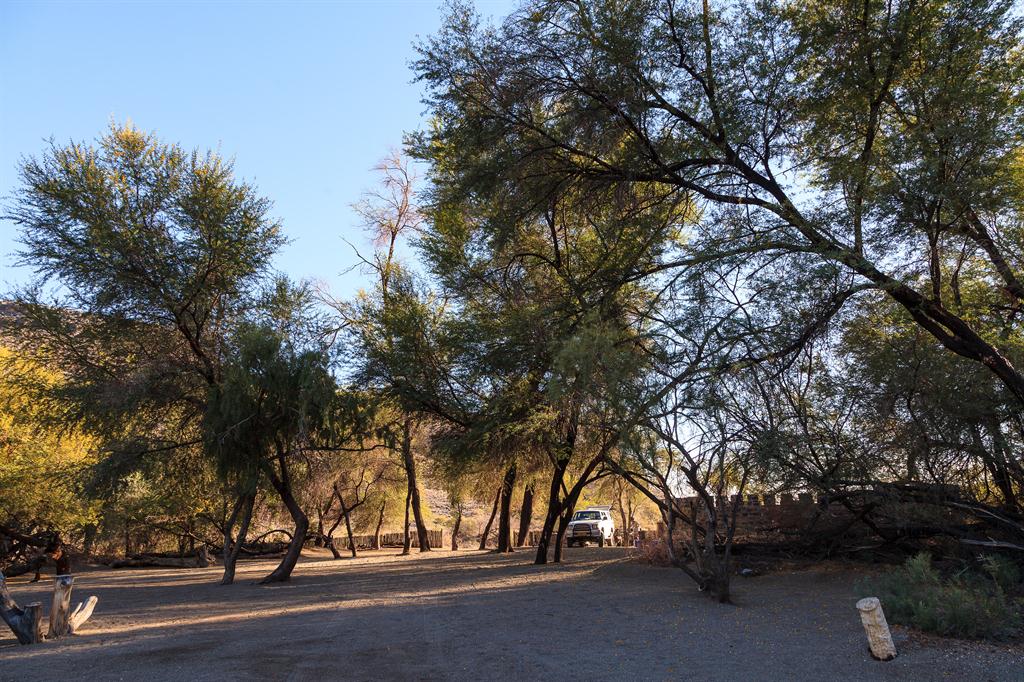

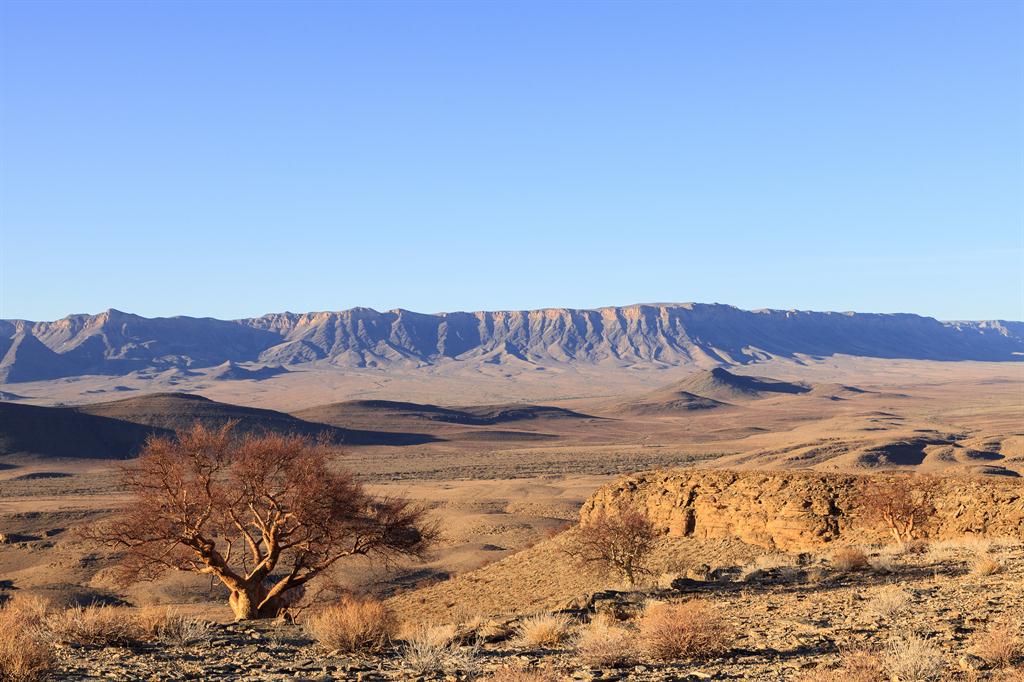
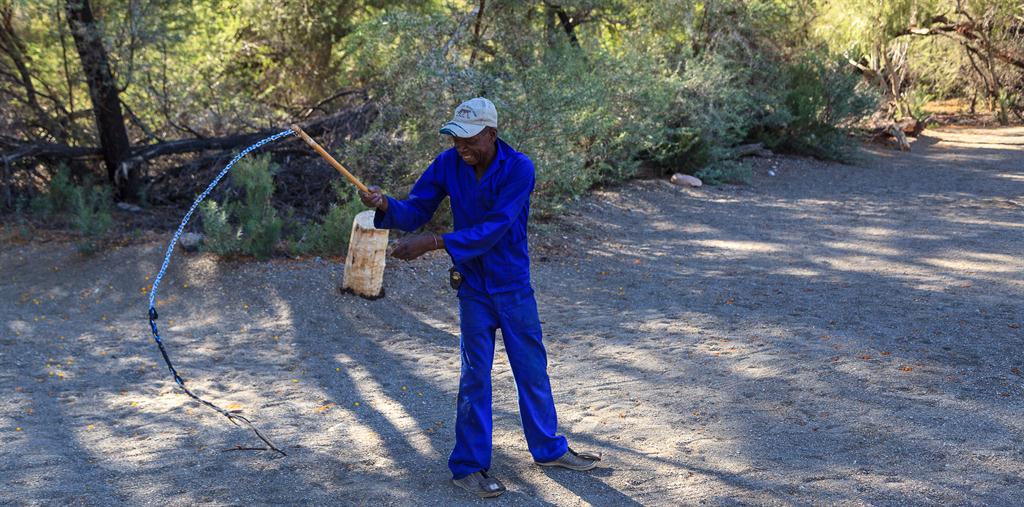
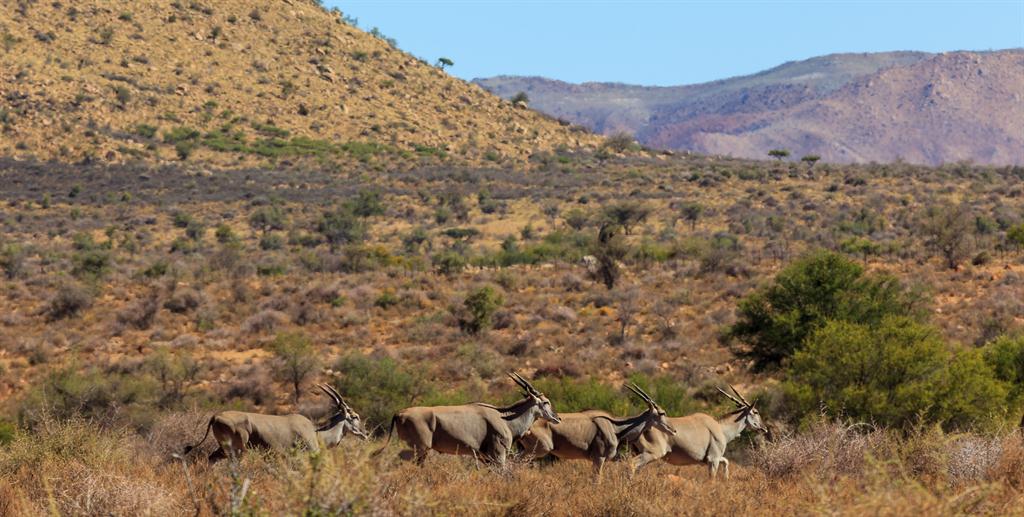



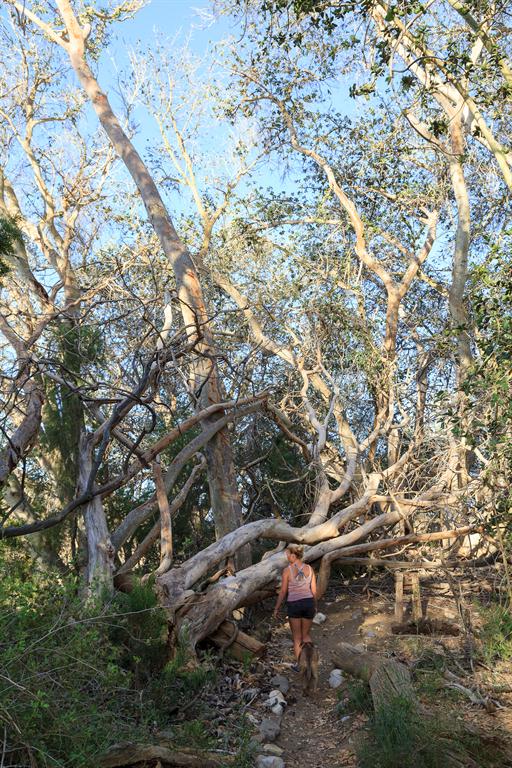
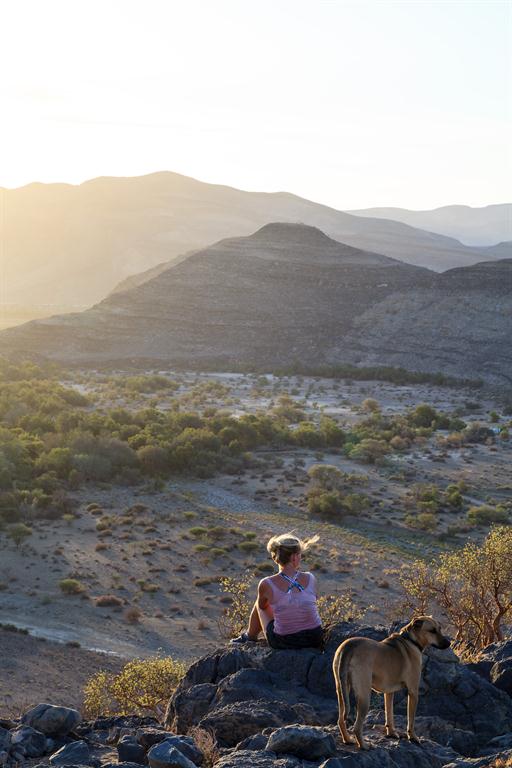

Kommentar
Allgemeine Zeitung
Zu diesem Artikel wurden keine Kommentare hinterlassen